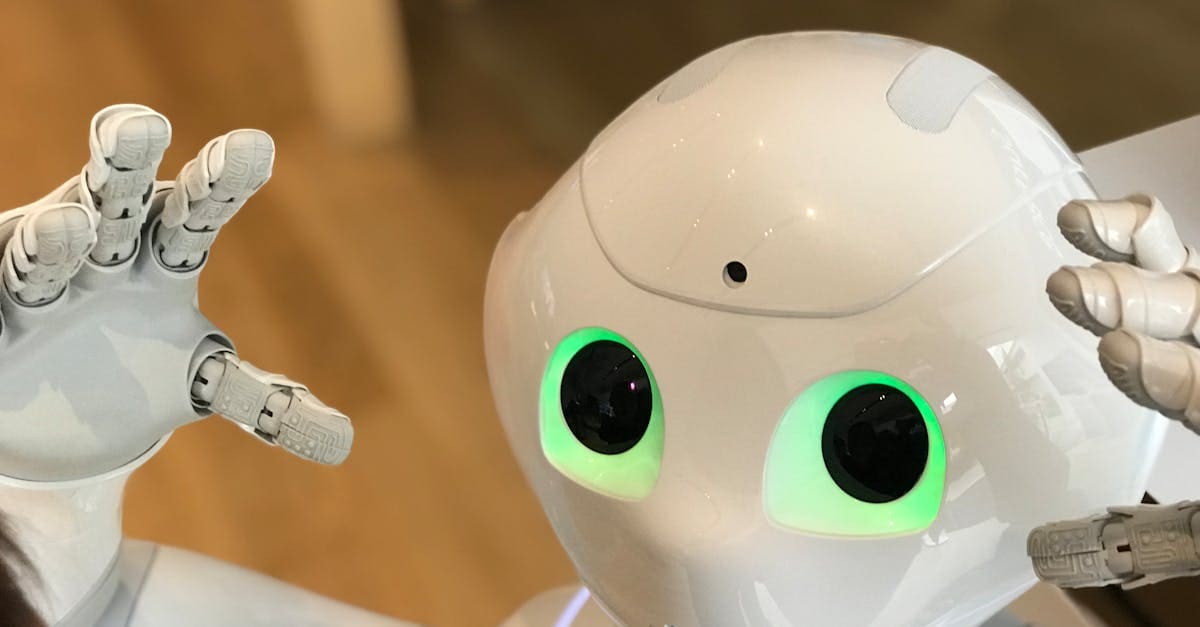Warning: Are You Missing the Truth About AI Emotion Recognition?
Did you know that AI emotion recognition is revolutionizing how we understand and interact with each other? Imagine a world where machines can accurately interpret your emotions through your facial expressions and voice patterns. This isn’t just the stuff of science fiction anymore. Businesses are harnessing this technology to enhance customer interactions and boost sales, utilizing AI’s ability to decode emotions in real time. Despite the fascinating potential, this tech comes with its own set of challenges, from privacy concerns to questions about its accuracy and ethical implications.
Emotional analysis is no longer confined to guessing games; it’s becoming a sophisticated tool in various industries. For example, AI can personalize product recommendations in eCommerce by analyzing your emotional cues in the moment. Emotion-aware robotics are poised to fill the void in digital interactions, helping reduce feelings of being ignored. However, while the allure of AI human interaction is strong, concerns about privacy and the ethics of emotion detection AI linger. The debate about whether facial expression analysis can truly capture human emotions is ongoing, with some seeing it as more art than science.
Curious to know more about the truth behind this cutting-edge technology? It’s time to dig deeper into how emotion detection technology is reshaping industries and what it means for you. Understanding the impact and the concerns can help you navigate this evolving landscape with confidence. Dive in to uncover why this matters to every one of us and what the future might hold.

Photo provided by Laura Musikanski on Pexels
In the article
- Understanding AI Emotion Recognition
- Impact on AI Human Interaction
- Regulations and Ethical Concerns
- The Future of Emotion AI Applications
Understanding AI Emotion Recognition
How AI Emotion Recognition Works
Have you ever wondered how AI can really “read” emotions? AI emotion recognition is a fascinating technology that tries to understand what we are feeling. First, it looks at our facial expressions. Our faces move in different ways when we feel happy, sad, or angry. AI systems use cameras to capture these facial movements. Then, they analyze them to guess our emotions.
But that’s not all. AI also listens to our voices. It pays attention to how we speak. Our voice tone and speed can show if we are excited or upset. AI listens for these facial expressions voice changes and tries to match them with specific feelings. Finally, it examines our body language. How we sit or stand can reveal a lot about our emotions. By watching these cues, AI tries to figure out what’s going on inside our heads.
Current Applications of AI Emotion Recognition
AI emotion recognition is already being used in many places. One area is healthcare. For instance, doctors use it to better understand how patients are feeling. It helps them diagnose or treat mental health issues. In retail, emotion detection AI is enhancing the shopping experience. It tracks how customers feel about different products.
In eCommerce, this AI technology may predict emotional responses. It helps brands suggest products that match our feelings. Imagine a website noticing our interest in a product but also sensing hesitation. It might offer a discount to encourage the purchase. Marketing teams use facial emotion AI to see how ads make us feel. By studying our reactions, they adapt their strategies to improve sales.
Can you imagine Robots that understand emotions? In robotics, emotion analysis is improving human-robot interaction. These robots aim to respond in ways that are sensitive to human feelings. The technology helps robots detect and interact better with people, making them more useful in places like customer service.
Challenges and Limitations
AI emotion recognition isn’t perfect. One big challenge is privacy concerns. People worry about their data being used without permission. Facial expressions can be very personal. If someone takes a photo of you looking unhappy, it could be misunderstood. Bias in data is another problem. Sometimes, the data used to train AI systems doesn’t include enough diversity. This can lead to misinterpretations could lead to harm for people from different backgrounds.
Facial expressions are not always reliable indicators of emotions. People from different cultures might express emotions differently. What seems like a smile in one culture might mean something completely different in another. So, cultural differences complicate interpretation. This makes it tough for AI to be accurate all the time.

Photo provided by Israyosoy S. on Pexels
Impact on AI Human Interaction
AI Empathy Technology in Practice
What if AI could feel empathy? AI empathy technology is trying to make that happen. AI social robots are designed to respond empathetically. Think of a robot that can comfort someone who is sad. These robots use emotion-aware robotics to understand human emotions and act accordingly. This technology can make robots more relatable and helpful in healthcare and therapy settings.
Enhancing Emotion-aware Robotics
Emotion-aware robotics is an exciting field. It focuses on making robots more sensitive to human emotions. Robotics emotion analysis aims to improve how robots interact with us. Imagine a robot assistant that can sense when you are stressed and offer to help. By understanding our emotions better, these robots can provide more personalized support and make our lives easier.

Photo provided by Alex Dos Santos on Pexels
Regulations and Ethical Concerns
Emotion recognition technology has caught the attention of regulators. The EU AI Act restricts the use of emotion detection AI in certain places. For example, it is banned in workplaces and schools. The reason is to protect people’s privacy and avoid ethical issues. Some people worry that this technology could be misused and lead to unfair treatment.
- Not allowed in schools
- Prohibited in workplaces
Companies face penalties if they don’t follow these rules. Non-compliance could lead to fines or restrictions on their operations. These rules are in place to ensure AI systems are used responsibly. However, finding the right balance between innovation and individual rights is challenging.

Photo provided by Google DeepMind on Pexels
The Future of Emotion AI Applications
What does the future hold for emotion AI applications? As technology advances, new possibilities emerge. AI might predict how we will feel in certain situations. This could lead to even more personalized experiences. Imagine getting a song recommendation that matches your mood perfectly!
Potential for Sentiment Analysis in Robotics
In robotics, sentiment analysis is becoming crucial. Robots are being developed to understand and respond to our feelings. They aim to enhance human interaction by detecting emotional cues. For this to work well, unbiased data is essential. Robots need accurate information to interpret emotions fairly, avoiding misunderstandings.
AI in Emotion Detection: A Risky Endeavor?
While AI in emotion detection offers many benefits, it also poses risks. One concern is misinterpretations. If AI reads emotions incorrectly, it could lead to wrong decisions. Imagine a law enforcement situation where AI misreads a suspect’s emotion and causes unnecessary harm. Ensuring accuracy is vital to avoid such scenarios.
Ensuring Responsible Use of AI
There’s an ongoing debate about the reliability of AI for emotion recognition. Some people question whether AI can truly understand human emotions. Critics argue that AI systems need to be more consistent and transparent. To ensure responsible use, it’s important to continue evaluating these technologies. Ethical practices should always guide development and implementation.
Moving Forward with Emotion AI
Understanding how AI interprets emotions is fascinating. It promises to enhance many sectors like customer service and healthcare by making interactions more personal and intuitive. However, the technology is still evolving, with ethical and privacy concerns that require thoughtful consideration. Careful implementation can lead to better human-AI interactions.
To start, you can explore how companies integrate emotion-detection tools by visiting tech forums or reading case studies. Stay informed about the latest research to see both the potential benefits and challenges. Ensuring you understand the implications will help you make informed decisions about using this technology.
Take a curious step forward. Keep asking questions and stay engaged with the ongoing conversation about emotion AI. Your insights could shape how this technology develops and is used responsibly in the future.







